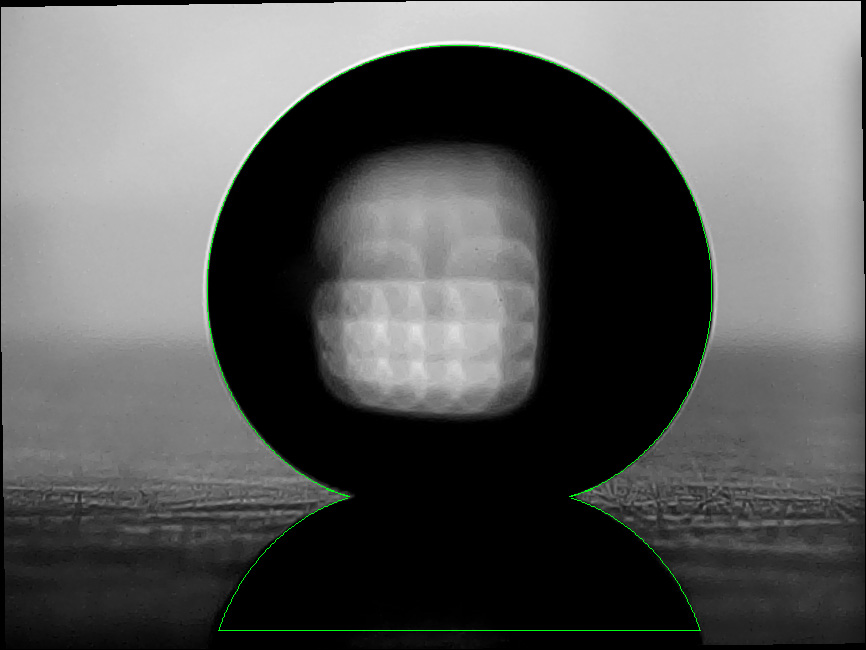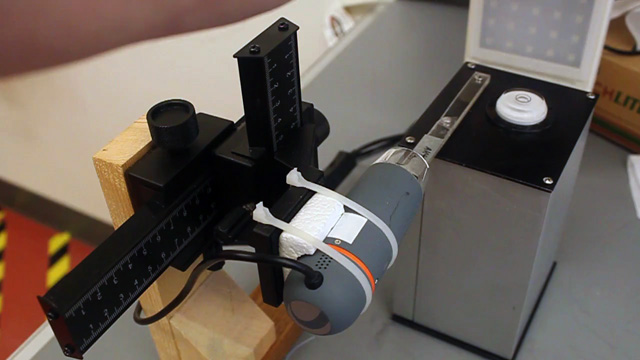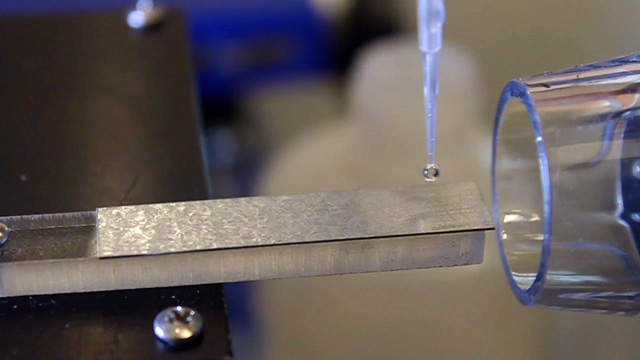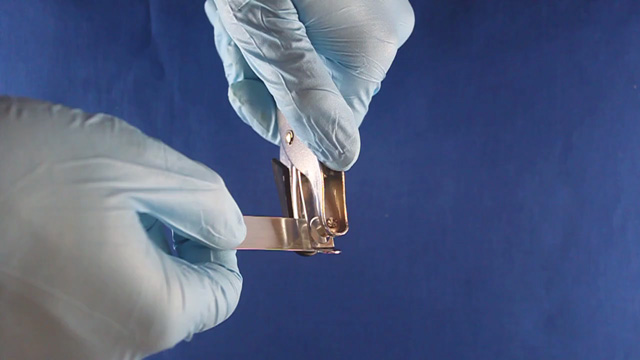
Measuring Contact Angles
Procedure by George Lisensky, Nicholas Kaung Shein, and Alex Knapp, Beloit College
Turn on lamp. Check the bubble level. Fine positioning of the microscope will be adjusted by turning the knobs. | Start the "Celestron Micro-Capture Pro" software. Select Options/Resolution/2592*1944 (5M) |
| Click on the upper left icon to take a photo. |
Drop Shape Analysis
The effects of gravity make the water drop deviate from spherical so a plug-in for Image J is used to match the Young-Laplace second-order differential equation to the image data. See http://bigwww.epfl.ch/demo/dropanalysis/ and Aurélien F. Stalder, Tobias Melchior, Michael Müller, Daniel Sage, Thierry Blu, and Michael Unser, "Low-bond axisymmetric drop shape analysis for surface tension and contact angle measurements of sessile drops," Colloids and Surfaces A: Physicochem. Eng. Aspects 364 (2010) 72-81. This analysis assumes the left and right halves are identical so it is important that the surface be level. Given the equation for the drop-shape, the contact angle is the tangent where the drop meets the surface. Steps using Image-J with the Low-Bond Axisymmetric Drop Shape Analysis plug-in
Steps using Image-J with the Low-Bond Axisymmetric Drop Shape Analysis plug-inClick on slider bar to adjust by 1 using arrow keys
y0 (vertical top)
x0 (horizontal center)
c = water (do not adjust)
Optimize b and h ONLY (uncheck default x and y) by gradient energy
b (top curvature)
h (bottom extension)
Manually adjust h so the two circles meet at the surface, then possibly optimize gradient energy again
Record the contact angle
- Zinc strips, for example from Home Science Tools
Equipment
- Celestron 5 MP Handheld Digital Microscope Pro (Amazon)
- SHOOT 4 Way Macro Focusing Rail Slider with 1/4" Screw Hole for Close-up Shooting (Amazon)
- Attach slider to 8" tall wooden T-stand with 1/4" bolts
- Attach microscope to rail slider with cable ties
- Attach T-stand to benchtop with a C-clamp
- Project box, approximately 3.5" x 4" x 6" with a stage that extends
- 4 µL syringe
- Bubble level (Menards)
An alternative system with a computer controlled motorized automatic dispensing system is described at http://www.instructables.com/id/Contact-Angle-Instrument/
This page created by George Lisensky, Beloit College.
Last modified July 9, 2019.







